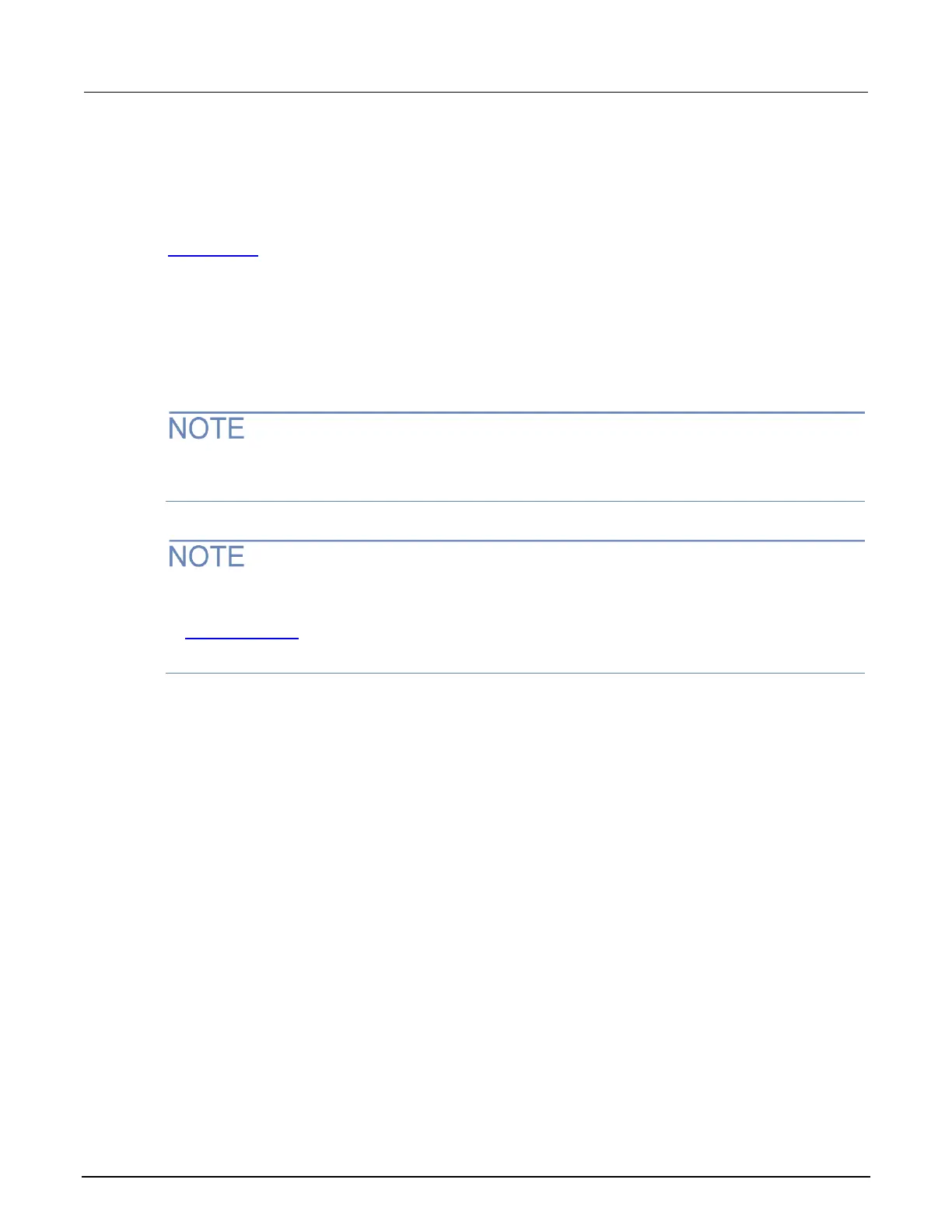Model 2601B-PULSE System SourceMeter Instrument Reference Manual Section 6: Triggering
2601B-PULSE-901-01A April 2020 6-15
Timer action overruns
The timer receives an action overrun when it generates a trigger event while a timer delay is still in
progress. Use the status model to monitor for the occurrence of action overruns. For details, see the
Status model (on page 15-1).
Using timers to perform pulsed sweeps
When the pulser is disabled, you can use timers used to control the pulse width during a pulsed
sweep. To create a pulse train, a second timer must be used to configure the pulse period. The
examples below show a single pulse output and a pulse train output.
The SMU end pulse action smua.trigger.endpulse.action must be set to
smua.SOURCE_IDLE in order to create a pulse.
When the pulser is enabled, configure pulsed sweeps using the
smua.trigger.source.pulsewidth and the smua.pulser.measure.delay attributes. Refer
to Pulser operation (on page 4-33) for information on setting up pulsed sweeps with the
pulser enabled.
Single pulse example
The SMU programming example below illustrates how to use a single timer to control the pulse width
of a single-shot pulse measurement. The programming example configures the timer and SMU
as follows:
Timer 1: Pulse width timer
• Set the delay attribute of a timer equal to the appropriate pulse width.
• Configure the timer to trigger when the SMU moves out of the arm layer of the trigger model.
• Assign the trigger event generated by the timer to the stimulus input of the SMU end pulse event
detector.
SMU
• Configure the source action to start immediately by setting the stimulus input of the source event
detector to 0.
• Set the end pulse action to SOURCE_IDLE.
The following figure shows the trigger setup for this example.

